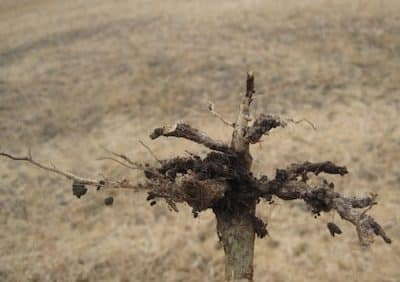Growers in fringe areas where clubroot is at low levels or has not yet been detected are encouraged to check their fields. Noticing the disease before it gets serious is an important step in long-term clubroot management.
Sept. 22, 2011
Wet conditions early in the season hastened the spread of clubroot throughout fields and to new areas. Higher incidences and severity than expected have been recorded in Alberta counties that only had a few documented cases in the past. And at least one new county, Vermilion River, has been added to the list of counties with known cases.
“Clubroot spores are soil borne. With heavy rains, you can get erosion that carries infested soil to new areas, and you get mud that cakes on machinery and gets transported throughout a field and from field to field,” says Dan Orchard, agronomy specialist with the Canola Council of Canada. “And because soil moisture is needed for spores to germinate and infect roots, wet years mean that more plants are infected, infection is more severe, and yield loss is greater.”
Growers in areas that have had very little or no clubroot in the past are encouraged to check their canola fields this harvest season. The disease may have arrived. With early detection, growers can take steps to contain the spores and protect the field. If clubroot is present but undetected, then growers, custom operators and whomever else visits the field can spread infested soil throughout the farm and to neighboring farms that much faster.
What to look for
Symptoms include stunted growth, wilting and premature ripening. Clubroot infection is often confused with heat stress, drought stress, or other diseases such as sclerotinia, fusarium wilt or blackleg. Proper diagnosis should always include digging up plants to check for gall formation on roots. Growers less familiar with clubroot may confuse clubroot galls with hybridization nodules, which look like little pimples or warts on the roots. Clubroot galls are a swelling of the root. If you find galls and are unsure the cause, send them to a lab to prevent misdiagnosis. Go to www.clubroot.ca for a list of labs.
The easiest time to scout for clubroot galls is late in the season, approximately two weeks before swathing, when galls are still white and firm. Another option is to identify patches of concern while swathing and sample afterwards. If possible, do this soon after swathing as galls decay quickly. However, if you are combining and run across poor yielding areas in fields, you can still check for the decaying, peaty textured galls on roots. Again, if unsure, send questionable samples to a lab for confirmation.
Galls can be present on plants that show no above-ground symptoms. “These galls may not have been big enough to impede plant growth, and yields can be surprisingly good,” Orchard says. “But the next time that field is seeded to canola the infestation will be worse, and the time after that it could be devastating — unless growers take steps to protect the field and the rest of the farm.”
What to do
Is the patch confined to a field entrance? If yes, you could seed that area to grass, reducing the potential for movement of that spore-infested soil through erosion or tillage and eliminating host crop to perpetuate the disease. Make sure to disinfect the drill afterward. If patches are throughout the field, try the following:
Use clubroot resistant varieties. This can keep undetected levels of clubroot from increasing to economically-significant levels. Recent research also suggests that rotating between varieties with different clubroot resistance sources may help prevent resistance from breaking down, assuming the frequency of canola in the rotation is not excessive.
Seed those fields known to have clubroot last. Moving equipment from field to field is a common way to spread clubroot. Seeding infested fields last limits the risk of spread and reduces the number of times you have to clean equipment in a season.
Clean equipment between each field. Clint Jurke, CCC agronomy specialist, says “99% of clubroot spores can be removed by simply kicking off the mud and soil from tires and openers.” A rinse with bleach can remove most of the rest. Keep this in mind if you hire custom operators and when driving quads and trucks from field to field. Discuss with your custom operators what their protocols are for equipment sanitation, especially if you farm in a clubroot-affected region. And don’t forget that your own equipment can be just as big a contributor to disease spread if not properly cleaned between fields.
Use a four-year rotation. This is the preferred rotation for disease management in general.
Clubroot management also extends to rotation crops. Growers should control volunteer canola and brassica weeds in non-canola fields. If clubroot spores are carried into that field by water runoff or human influence, these spores have nothing to infect if host weeds and canola volunteers are controlled. With nothing to infect, clubroot cannot reproduce and increase inoculum levels.
Finding clubroot in your field is not good news, but ignoring it won’t make it go away. Early detection and a swift management response can help keep that field in a profitable canola rotation for many more years to come. These steps also reduce the threat across the farm — and to neighbors’ fields as well.
To learn more about this disease, go to www.clubroot.ca. The Canola Council of Canada will hold workshops in the spring to highlight new research and explain methods to minimize the spread of clubroot.
END
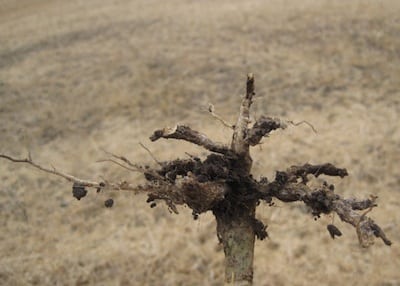
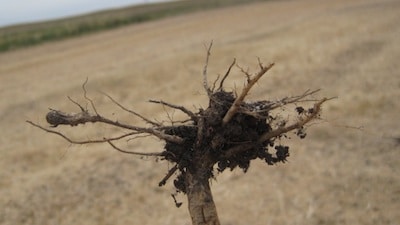
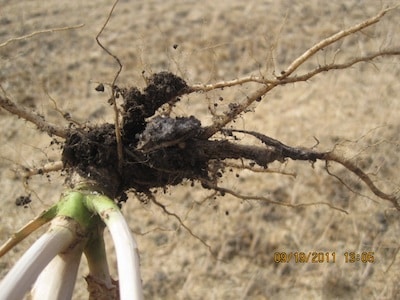
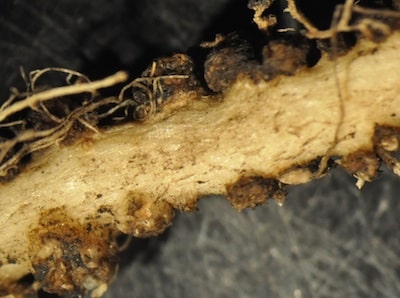
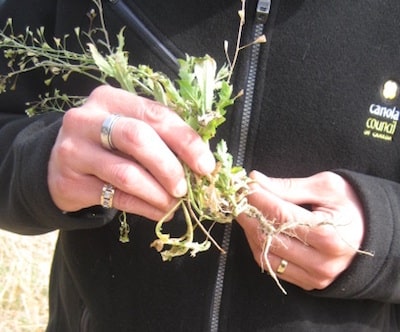
New videos on clubroot scouting and management:
General information on clubroot and some good examples of galls at various stages of development
Tips on identifying possible clubroot affected areas in fields and sampling techniques
Tips for scouting for clubroot during or following swathing
Tips on using resistant varieties as part of your clubroot management strategy
Media can contact a Canola Council of Canada agronomy specialist in your region:
Kristen Phillips
Manitoba, phillipsk@canolacouncil.org 204-761-2143
Jim Bessel
Central Saskatchewan, besselj@canolacouncil.org 306-373-6771
Shawn Senko
Eastern Saskatchewan, senkos@canolacouncil.org 306-270-9307
Clint Jurke
Western Saskatchewan, jurkec@canolacouncil.org 306-821-2935
Troy Prosofsky
Southern Alberta, prosofskyt@canolacouncil.org 403-332-1412
Dan Orchard
Central Alberta, orchardd@canolacouncil.org 780-777-9923
Doug Moisey
North Central Alberta, moiseyd@canolacouncil.org 780-645-9205
Greg Sekulic
Peace Region, sekulicg@canolacouncil.org 780-832-2382
This media release is supported regionally by:
Alberta Canola Producers Commission; SaskCanola; Manitoba Canola Growers Association; Canola Council of Canada; Peace River Agriculture Development Fund; B.C. Ministry of Agriculture & Lands.

